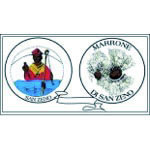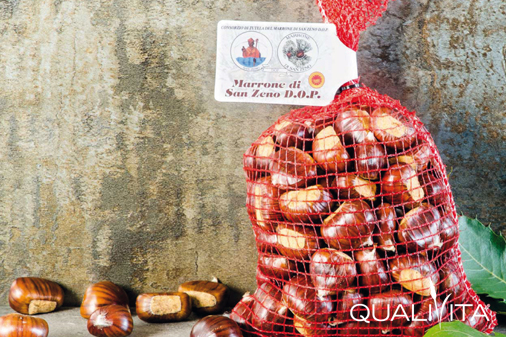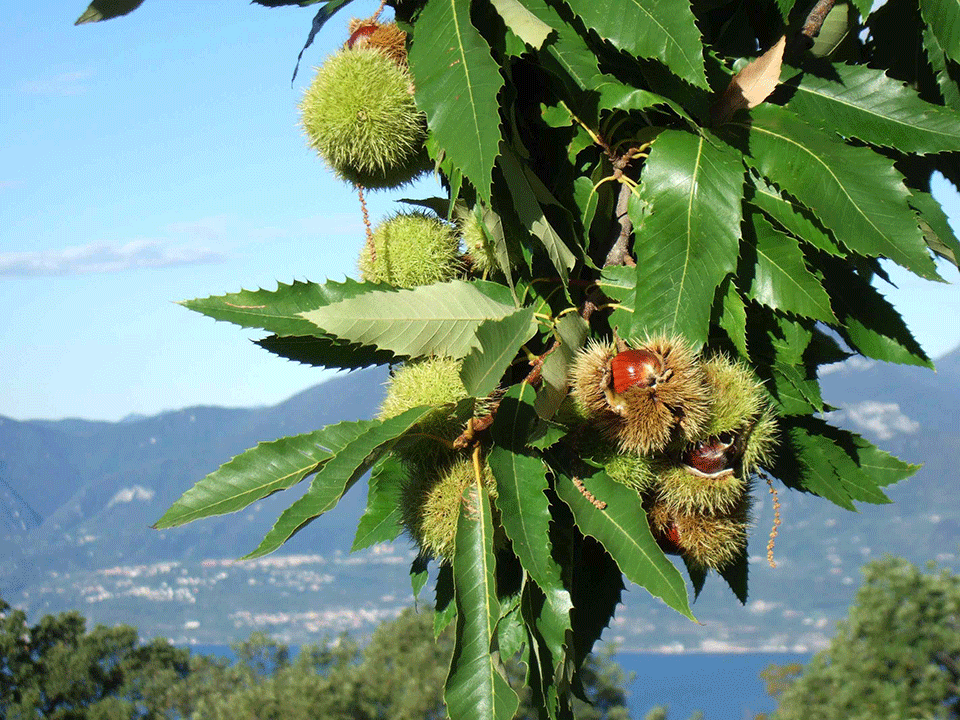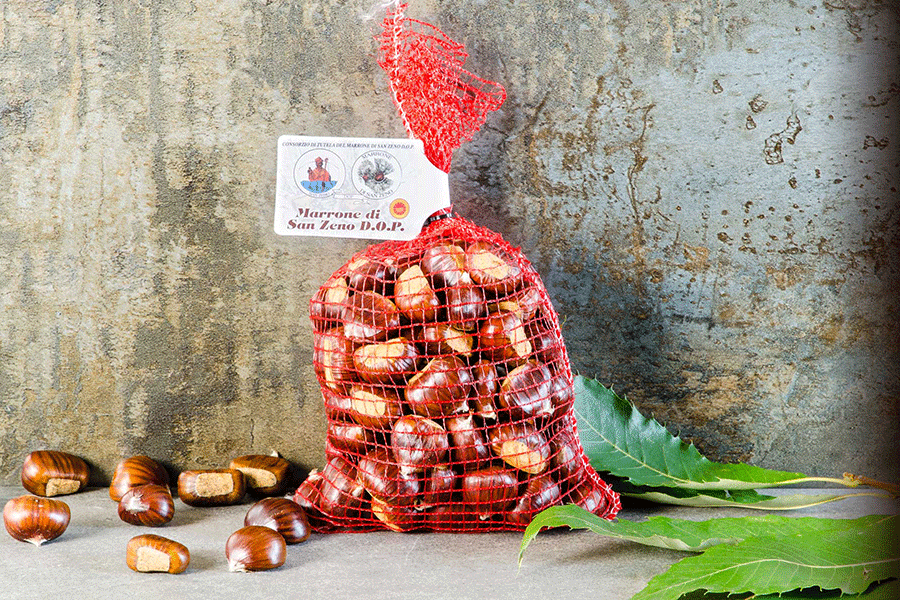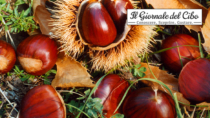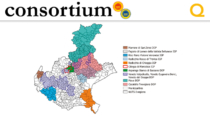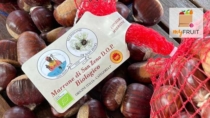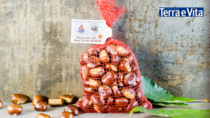Description
The Marrone di San Zeno PDO refers to the fresh chestnut belonging to the species Castanea sativa Miller, which can be traced back to the Marrone variety.
Production Area
The production area of Marrone di San Zeno PDO is within parts of the municipalities of Brentino Belluno, Brenzone, Caprino Veronese, Costermano, Ferrara di Monte Baldo and San Zeno di Montagna, in the Province of Verona, in the Veneto region.
Production Method
The chestnut groves must be situated at an altitude of between 250 and 900 metres above sea level. Harvesting can either be carried out by hand or with suitable machines, ensuring that both the tree and the fruit remain intact. Before being put on the market, the chestnuts are subjected to the traditional novena and rissara preserving techniques. The first consists of keeping the fruit immersed in water for nine days, changing part or all of the water every two days, without any kind of additive; the second involves the fruit and cupules being left outside together for 8-15 days.
Appearance and Flavour
Marrone di San Zeno PDO is medium-large in size (50-120 achenes/kg). Its external shell is thin and shiny, with a light chestnut brown colour and darker streaks. The seed is straw-yellow in colour and slightly wrinkled, with a pasty texture and a pleasantly sweet flavour.
History
Chestnut growing has represented an important economic resource for the mountain community of Monte Baldo for many centuries. There are a few written documents dating back to the 12th and 19th centuries which mention the production areas in cadastral surveys, describing the prosperous development of chestnuts, as well as harvesting methods and the sale of chestnuts at weekly markets, a tradition which returned after the Second World War. There is also a research paper published in the Atti dell’Accademia di Agricoltura, Scienze e Lettere di Verona, focusing on the harvesting, preservation and sale of chestnuts, which towards the end of the last century were sold to shopkeepers or directly at the weekly market in Caprino Veronese. Finally, in the 1920s, the Municipality of San Zeno di Montagna began hosting the traditional chestnut festival, which today is known as the Chestnut Market Exhibition.
Gastronomy
Marrone di San Zeno PDO should be kept in a cool, dry place. It can be consumed either fresh or processed. The fresh chestnut is roasted in characteristic perforated pans or boiled in water. It can also be used to make delicious desserts like castagnaccio (chestnut cake) and tronchetto (a kind of chocolate log), as well bread, pasta and polenta. It pairs perfectly with the local wines, such as Bardolino, preferably the Novello, or Recioto della Valpolicella PDO. The most typical dish that contains Marrone di San Zeno PDO, is chestnut soup, a mountain version of the classic Venetian bean soup.
Marketing
The product is marketed as Marrone di San Zeno PDO. It is sold fresh during autumn, in food-grade bags weighing 0.3, 0.5, 1, 2, 3, 4, 5 or 10 kg. The larger-sized packets weighing 25 and 50 kg must be made of jute or other suitable materials.
Distinctive Features
Marrone di San Zeno PDO is rich in starch and provides our body with a good amount of calories, proteins, minerals and vitamins. It is extremely nutritious, energetic and healthy. Digestibility and caloric intake vary depending on its state and how it is cooked: when raw, digestibility is poorer and the caloric intake is about 150 calories per 100 g; boiled it is more easily digestible and has a lower caloric intake (about 120 calories per 100 g); finally, roasted the caloric intake is higher again.



